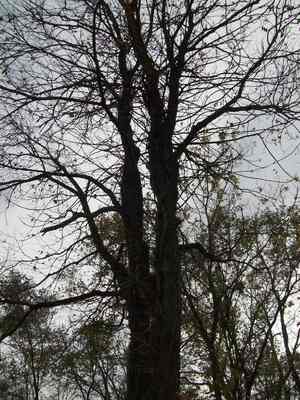Angelica is not a single herb but a family of over 50 varieties. The one most often grown in gardens, however, is Angelica archangelica.
While not quite as tall as lovage, angelica is still an herb garden giant, often growing to six feet tall. The fleshy tap root, which goes quite deep, making transplantation difficult, can weigh up to three pounds. The flower heads on a well grown, happy plant can be almost as big as your head.
While use of the plant predates Christianity- pagans used the plant as protection against evil enchantments- the name is thought to have been based on the fact that the plant blooms around Michael the Archangel’s day. The use of angelica for protection continued at least through the middle ages.
Angelica is considered a biennial or a short lived perennial. It does not bloom the first year, and once it blooms and makes seed, it dies. That death can be put off a couple of years if the flowers are cut off before they can bloom, although the plant rarely lives past four years no matter what. The flowers are impressive things and it’s a shame to miss them, so I vote for letting the plant do its thing. They are easy to start- use fresh seed and just press them into the soil surface, leaving them exposed to light, and they usually have a very high germination rate. Ideally the seeds are started in the same summer as the seeds form- they don’t keep well. Don’t bother trying to divide the plant; they resent it. Hardy to zone 4, this plant is a tough one.
The scent of the plant is considered by some to be similar to celery; others call it musk and it’s juniper to others still. The entire plant has a licorice taste, stronger in the roots and seeds than in the leaves. In Iceland they eat the stems and roots raw with butter and in Norway they make bread of the roots. The stems can be cut and prepared like asparagus, and the leaves used in soups and stews. The most familiar culinary use of angelica is probably the candied stems that are used as decorations on cakes in Europe, but it’s also used to flavor wines and liquors including absinth, chartreuse, gin and vermouth. Tea made from the leaves is supposed to taste similar to black tea (camellia sinensis), but given the licorice flavor, I find that one hard to believe. Beware of eating too much angelica at one time, as it contains furocoumarins that can increase ones sensitivity to sunlight. It’s also contraindicated for diabetics as it increases the passing of sugar in the urine; no study that I’ve found, however, says whether this is because it raises the blood sugar (bad) or lowers the threshold at which the kidneys dump sugar from the blood to the urine (doesn’t matter).
It’s also used in some perfumes; the fresh root weeps a resinous gum when cut. This gum can be used as a substitute for benzoin as a fixative.
Other varieties of angelica include A. sinensis, known as Dong Quai in Chinese medicine. This is used for ‘female problems’ and is known to dilate blood vessels; it’s not for use when pregnant or if you have a bleeding disorder. A. atropurpurea has dark purple stems and the new leaves are red; they mature to green with red veins. The flowers, however, are white. Angelica gigas AKA Alexanders, is the one that combines the dark purple stems with equally dark purple flowers. They remind me of purple broccoli. Given my love of dark plants, this one is my favorite!
All the angelicas like a soil that is deep and rich and preferably slightly acid. It needs to be moist but never soggy or the roots will rot. They need part shade- the dappled shade under trees is ideal. The flowers, if you allow the plant to flower, attract bees and other beneficial insects


